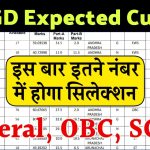
The recent decision by the Reserve Bank of India (RBI) to adjust the repo rate has prompted several banks to revise their interest rates. One of the major banks has announced a cut in savings account interest rates, directly affecting millions of customers. If you rely on a savings account to grow your wealth, understanding what this means is crucial for making informed financial decisions.
Also Check: RRB Group D Recruitment: Application Deadline Extended for 32,000 Vacancies—Check New Dates!
Savings Account Rates
| Topic | Details |
|---|---|
| RBI Decision | RBI reduced the repo rate by 25 basis points to 6.25% |
| Bank Affected | Major private sector bank (e.g., Kotak Mahindra Bank) |
| New Interest Rates | 3.00% for balances Rs 5 lakh – Rs 50 lakh, 3.50% for above Rs 50 lakh |
| Previous Interest Rates | 3.50% for balances Rs 5 lakh – Rs 50 lakh, 4.00% for above Rs 50 lakh |
| Effective Date | February 17, 2025 |
| Impact on Customers | Lower returns on savings accounts, need for investment diversification |
| Official Source | RBI Official Website |
Why Did the Bank Cut Savings Account Rates?
Understanding the RBI’s Repo Rate Cut
The repo rate is the rate at which the RBI lends money to commercial banks. When the RBI reduces this rate, banks get funds at a lower cost, which often leads to a decrease in deposit and lending rates.
- A lower repo rate encourages banks to lend more, stimulating economic growth.
- Banks, in turn, reduce interest rates on both loans and deposits, making it cheaper to borrow but offering lower returns on savings.
Impact on Major Banks
Banks adjust their savings account interest rates based on their liquidity and cost of funds. Kotak Mahindra Bank, for instance, has reduced its savings account interest rates following the RBI’s move. This is a trend observed across major banks like HDFC, SBI, and ICICI whenever the RBI tweaks policy rates.
How Does This Affect Customers?
1. Lower Interest Earnings on Savings Accounts
If you keep a significant amount in your savings account, you will now earn less interest on your deposits. This affects:
- Salaried professionals who rely on savings for passive earnings.
- Retirees who depend on bank interest as a steady income.
- Businesses that maintain large cash reserves in bank accounts.
For example, if you had Rs 10 lakh in your savings account earning 4% per annum, you would have received Rs 40,000 annually. With the revised rate of 3.5%, your earnings drop to Rs 35,000.
2. Fixed Deposit (FD) Returns May Also Drop
Banks often revise fixed deposit (FD) rates after a repo rate change. If you were planning to invest in FDs, check the latest rates before committing.
| FD Tenure | Old Rate | New Rate (Expected) |
| 1 Year | 6.5% | 6.2% |
| 3 Years | 7.0% | 6.7% |
| 5 Years | 7.5% | 7.2% |
3. Need for Alternative Investment Avenues
With falling savings interest rates, diversification becomes crucial. You may consider:
- Fixed Deposits (FDs): While rates may decrease, they still offer better returns than savings accounts.
- Mutual Funds: Debt or equity mutual funds can provide better returns in the long run.
- Government Bonds: Safe investment options like PPF (Public Provident Fund) and Sovereign Gold Bonds (SGBs).
- Stock Market: If you can tolerate some risk, investing in blue-chip stocks may yield higher returns.
Also Check: KCET 2025: KEA Issues New Guidelines for Document Verification – Check Details Here
Additional Considerations
How to Minimize the Impact of Rate Cuts
- Increase Savings in High-Interest Accounts: Some digital banks or small finance banks offer higher savings rates than traditional banks.
- Invest in Fixed Returns Products: Consider long-term FDs or recurring deposits.
- Explore Hybrid Investment Options: Look into ULIPs, balanced mutual funds, and corporate bonds.
- Consider International Investment Avenues: Certain foreign investment instruments provide better returns compared to domestic deposits.
Historical Context: Savings Interest Rate Trends in India
- 2010-2015: Savings rates hovered around 4% – 5%.
- 2016-2019: Rates gradually declined due to economic slowdowns.
- 2020-2024: Post-pandemic, rates fluctuated due to inflation and RBI policy changes.
- 2025 and beyond: Likely to remain low unless inflation rises significantly.
What Should You Do Next?
1. Compare Savings Account Interest Rates
Not all banks offer the same interest rate on savings accounts. Some small finance banks or digital banks provide higher returns than major commercial banks.
2. Consider Locking in Fixed Deposit Rates
If you are planning to invest in FDs, it may be wise to do so before banks revise their rates downward.
3. Diversify Investments Beyond Savings Accounts
To combat lower interest rates, explore investment options that provide inflation-beating returns.
Also Check: UP Board Roll Number List 2025 Class 10 & 12 PDF Download Link at upmsp.edu.in
(FAQs)
1. Why did the bank reduce savings account interest rates?
Banks adjust savings interest rates based on the RBI’s repo rate changes. A lower repo rate means banks earn less on their reserves, so they reduce deposit interest rates.
2. Will FD interest rates also decrease?
Yes, FD rates often follow savings account rate cuts. However, the extent of reduction depends on each bank’s policy.
3. Should I move my savings to another bank?
If your priority is higher interest earnings, you may consider switching to a bank offering better rates. However, factor in service quality and financial stability.
4. What are better alternatives to savings accounts?
You can explore fixed deposits, mutual funds, government bonds, and stock market investments for higher returns.









